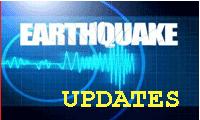
Today (NST)
Thursday, Apr 24, 2025
Smart Search
Please post in your Technical Queries, Comments & Suggestions to Contact us......
Advertisement

For Advertisement
|
|
| Subscribe to BREINS Sci-Tech |
| Visit this group |

Geotechnical Investigation
Low-Strain Field Tests
Dynamic soil properties depend much on the shear strain level. Within the strain range below the order of 10-5, deformations shown by most of the soils are purely elastic and recoverable and the dampings are negligible. Low-strain tests operate below the strain specified above and are based on the theory of wave propagation in the materials.
Seismic geophysical tests represent an important class of field tests for determination of dynamic soil properties. These methods can be used for the location of different strata and for the evaluation of the subsoil characteristics rapidly and more economically than by borings.
Major types of low strain geo-physical field tests in this category are:
(a) Seismic Reflection Test
(b) Seismic Refraction Test
(c) Suspension Logging Test
(d) Rayleigh Wave Test
(e) Spectral Analysis of Surface Wave Test (SASW)
(f) Seismic Cross-Hole Test
(g) Seismic Down-Hole (up-hole) Test
(h) Seismic Cone Test
In many seismic tests, a source produces a “pulse” of generally p-waves, s-waves and surface waves whose times of arrival are measured at distant receivers. The sources may range from a sledgehammer blow to the ground surface to a buried explosive charge.
Seismic methods are based on the principle that the elastic shock waves have different velocities in different materials. At the interface of two different materials, the waves get partly reflected and partly refracted. Seismic methods of subsurface explorations generally utilize the refracted waves.
Seismic Refraction Test
Seismic refraction test is more commonly used method in earthquake engineering. In this method a series of receivers, usually geophones are placed in a linear array and energy source is created by a hammer blow or by a small explosive charge at point P (Fig-1). The geophones convert the ground vibration into electrical impulses and transmit them to a recording apparatus.

Fig-1 (Seismic Refraction Method)
Observation of the first arrival of the waves is recorded by geophones located at various points such as P1, P2, P3. The basic assumption of the refraction survey method is based on that the sub surface stratas are such that the velocity of the shock waves increases as the depth increases. This can be viewed as the limitation of this method as it can’t be used if a hard layer with a greater seismic velocity overlies a softer layer with a smaller seismic velocity.
At geophones located close to the point of impact, such as point P1, (Fig-1) the direct waves reach first. At the points located away from the source the refracted waves reach earlier than the direct waves. From the figure it can be inferred that the direct waves reach the geophones earlier if its distance is less than d1.
The time-distance relation is plotted (Fig-2). The time (t) of arrival of the first impulse at various geophones is taken as ordinate and the distance (d) of the geophones from the source S is taken as abscissa. Velocity in any layer is equal to reciprocal of the slope of the corresponding line. The slopes of the various lines are determined and from which corresponding velocities are computed.

Fig-2 (Plot of Distance from source of impact, d, & Arrival time of first wave, t)
After the determination of velocities at different layers, its depth can be calculated as :

